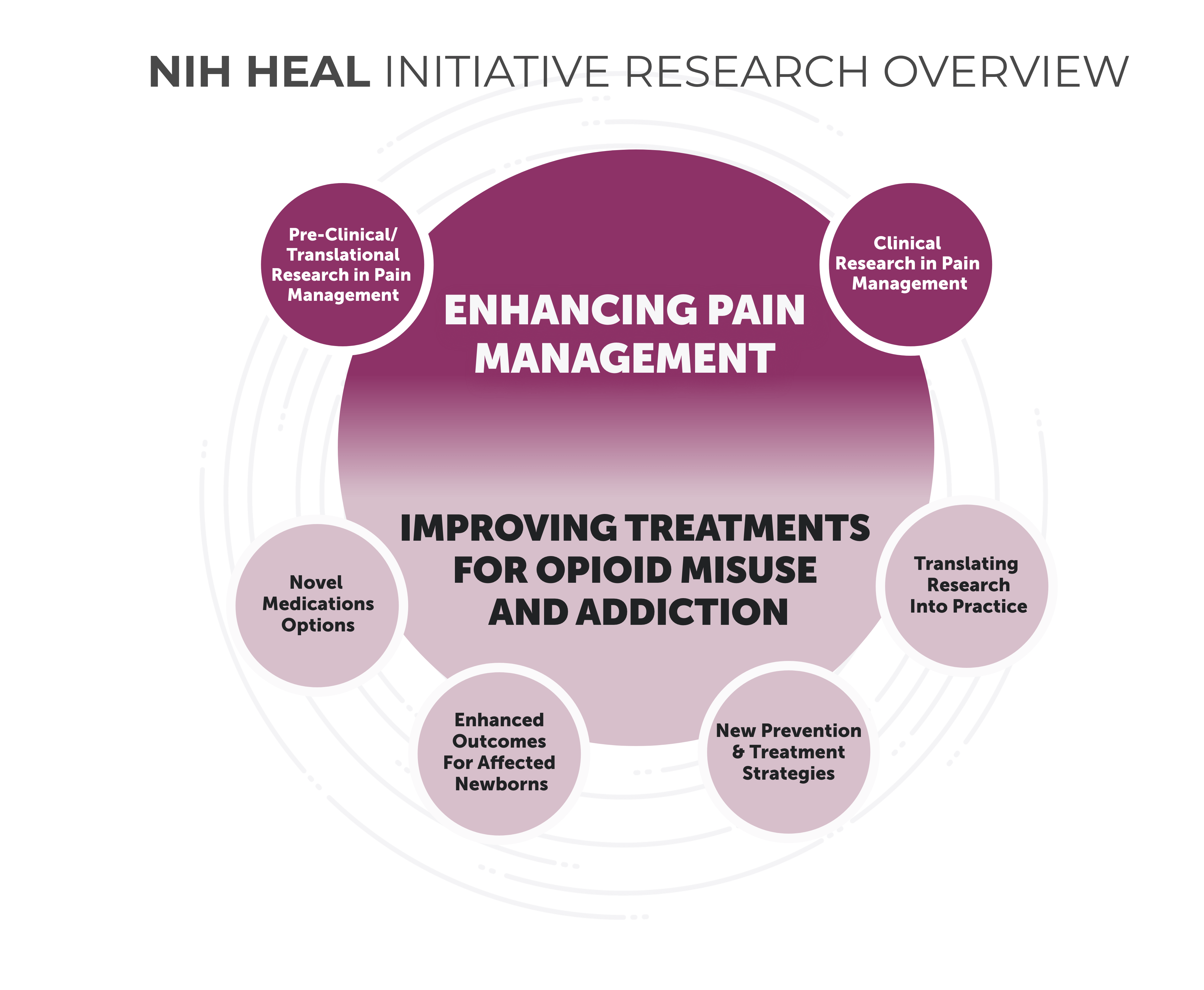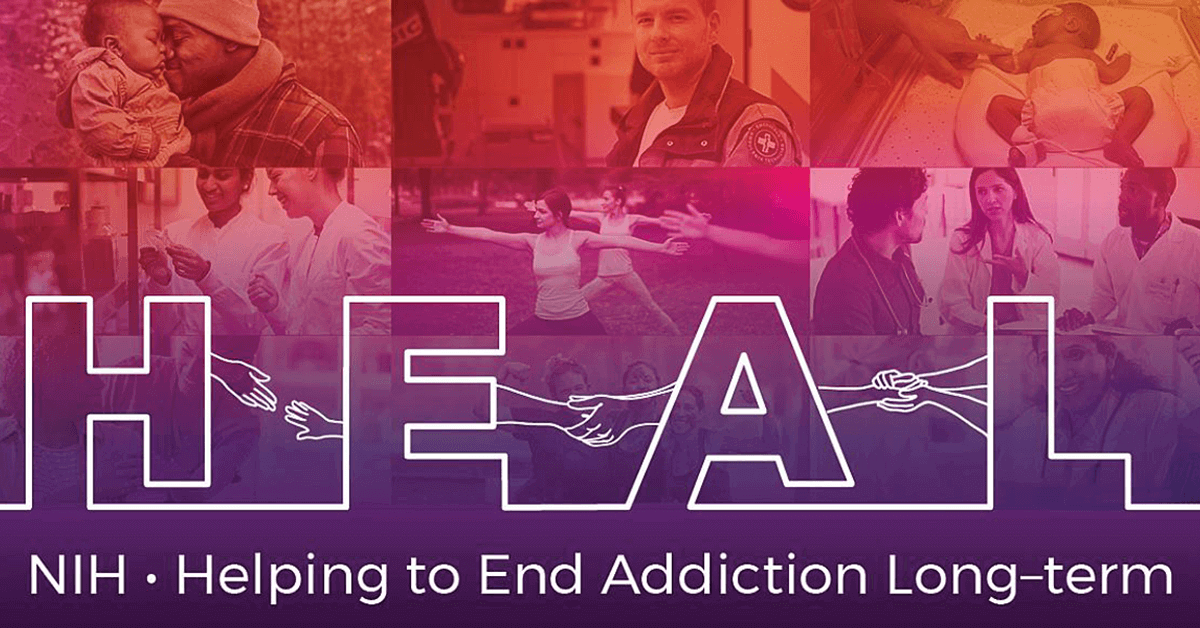The Opioid Crisis: All Hands on Deck with #NIHHEAL
With more than 130 people dying each day from opioid-related overdoses in the United States, the national crisis of opioid misuse, addiction, and overdose has reached epidemic proportions. It calls for scientific solutions that only the biomedical research community — working together with patients, providers, and stakeholders — can provide.
A research effort led by the National Institutes of Health (NIH), the Helping to End Addiction Long-term® Initiative, or NIH HEAL Initiative®, aims to prevent opioid overdose deaths and improve how we understand and treat both pain and opioid addiction.
“We need all hands on deck,” said NIH Director Francis S. Collins, M.D., Ph.D., at the January 2020 inaugural meeting of HEAL researchers and partners. “The unique structure of this initiative offers the promise of a united effort that will advance scientific progress further than would be possible otherwise.”
Too often, biomedical researchers and their projects find themselves cut off from related disciplines that could provide a fuller picture of the problem they seek to address. For the NIH HEAL Initiative, tackling the opioid crisis from every angle means deliberately focusing on inclusion and collaboration. That’s why the initiative is harnessing the power of 20 NIH Institutes and Centers, partner agencies from the U.S. Department of Health and Human Services, the private sector, and the people whose lives have been touched by the opioid crisis.
“Our mission is to provide solutions to the formidable and rapidly evolving opioid crisis," said Rebecca Baker, Ph.D., Director of the NIH HEAL Initiative. “The research response has to match in magnitude and in urgency.”
A cross-disciplinary approach
NIH HEAL Initiative research projects target two primary goals: enhancing pain management and improving treatments for opioid misuse and addiction.

The NIH HEAL Initiative’s six research focus areas are grouped in two themes: enhancing pain management and improving treatment for opioid misuse and addiction. Learn more about the NIH HEAL Initiative’s research focus areas.
Many of the challenges faced in improving treatments for pain and addiction cut across research domains and disciplines.
Stigma is one example. The initiative recently hosted a panel on the topic to raise awareness of how stigma and bias affect all people, including researchers and health care providers. Valerie Earnshaw, Ph.D., a social psychologist, stigma researcher, and assistant professor at the University of Delaware, was thrilled to see a focus on stigma.
“It’s one of the things that sets the NIH HEAL Initiative apart from our responses to some of our disease epidemics in the past,” she said. “In HIV, for example, it took a long time before researchers were engaged in conversations around stigma. Now, from Day 1, people are talking about it and they’re looking for solutions and they’re trying to figure out what to do about it.”
Caring for the whole person
The NIH HEAL Initiative’s problem-solving approach seeks to look at the whole person, throughout the lifespan, and the factors that limit access to appropriate treatment for pain or addiction.
The National Institute of Mental Health (NIMH), for example, is committed to understanding the intersection between opioid use disorder and mental health conditions. Through the initiative, NIMH is studying whether collaborative care, a way of providing care that combines mental and physical health care, improves treatment for patients afflicted by both opioid use disorder and a mental health condition.
“The NIH HEAL Initiative is tremendously exciting,” said Joshua Gordon, M.D., Ph.D., director of NIMH. “It is garnering expertise from Institutes across NIH to find — through research — a comprehensive solution for the national opioid crisis. The initiative represents a major new investment, which allows us to think outside the box and identify opportunities for innovation.”
The initiative aims to support out-of-the-box thinking across its more than 400 funded projects in 41 states. In one project, a researcher is experimenting with a blood test to predict how much pain someone is likely to feel after surgery (making tailored treatments easier); in another, a researcher is creating a computer simulation using “virtual patients” to identify and address potential biases held by health care providers. One project focuses on supporting pregnant women who have opioid use disorder, while another has the goal of developing a vaccine to help protect users of heroin from relapse and overdose.
Better health through better partnerships
“The NIH HEAL Initiative is unlike anything that I’ve seen before,” said U.S. Surgeon General VADM Jerome M. Adams, M.D., M.P.H. “Unfortunately, far too often in medicine and in science, we operate in silos …. My motto is ‘better health through better partnerships,’ and I couldn’t think of a better example of that than the HEAL Initiative.”
Janet Woodcock, M.D., director of the Center for Drug Evaluation and Research at the Food and Drug Administration (FDA), said, “This opioid epidemic has led to a much higher level of collaboration across federal agencies, as well as state and local health departments. The HEAL effort is really going to help by inspiring researchers, supporting them, and bringing them into this collaboration in a meaningful way to generate new data and new ideas. This will be very good for patients.”
Meanwhile, collaborations with health systems and with NIH’s sister agencies, the FDA and the Centers for Medicare & Medicaid Services, will ensure that research findings eventually become new treatments for pain and addiction.
HEAL investigators and leaders are optimistic that the initiative will be able to reverse the course of the opioid crisis.
“In the long run, I think that the answer to addiction is replacement of opioids,” said Walter Koroshetz, M.D., director of the National Institute of Neurological Disorders and Stroke. “And that is going to take a lot of work. But if the NIH HEAL Initiative is super successful, we’re going to come up with new pain treatments for people, eliminating the need for opioids. And that gets us on the road of never getting into this crisis again.”

Read About the NIH HEAL Initiative
Learn more about the initiative’s research program, governance, data-sharing policy, and more.

NIH HEAL Initiative Funding Opportunity Announcements
Explore open funding opportunities.

The NIH HEAL Investigators Meeting
Read about the January 2020 Investigator Meeting.
 U.S. Department of Health & Human Services
U.S. Department of Health & Human Services
